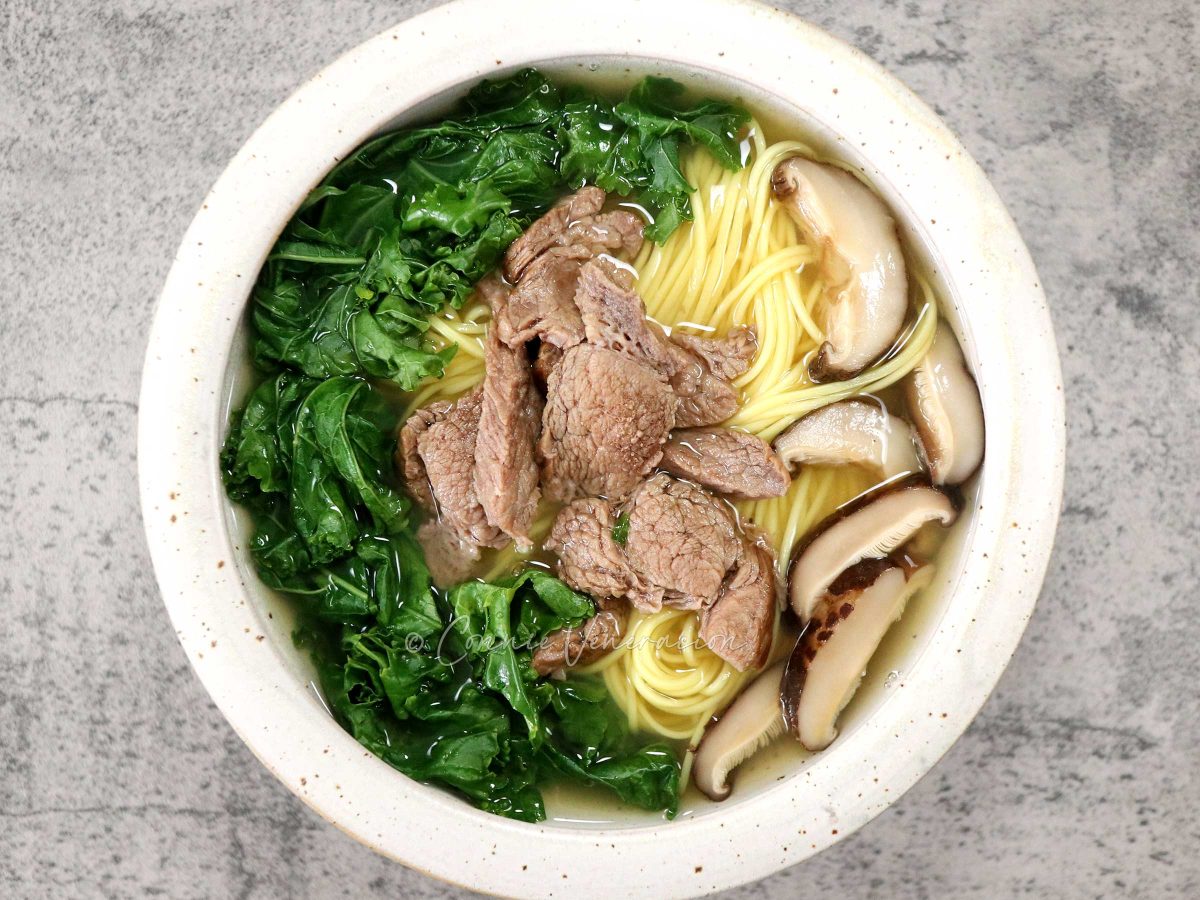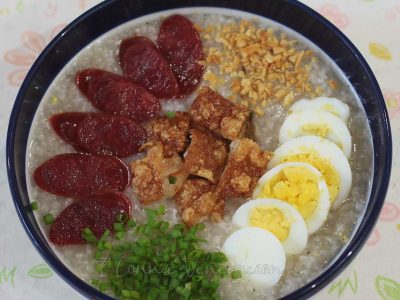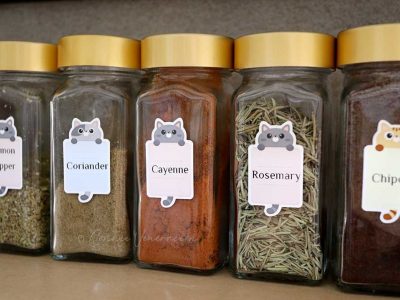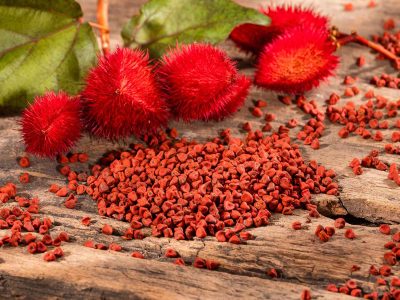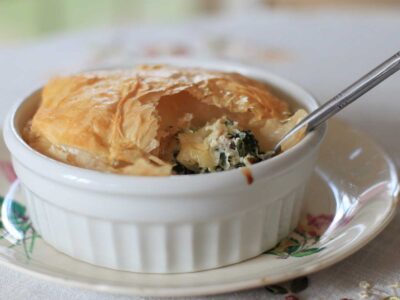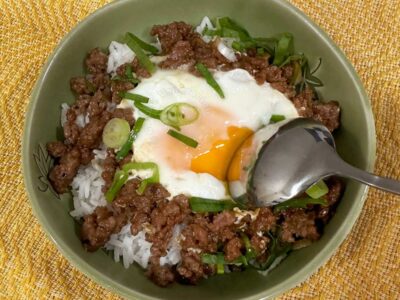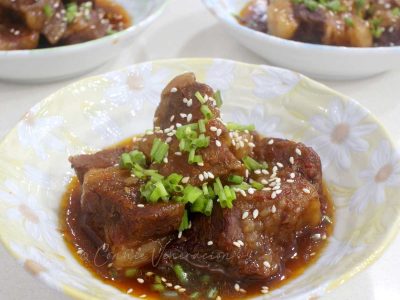There are several varieties of kale
Kale belongs to the Brassica oleracea species. TheBrassica oleracea species also includes cabbage, broccoli, Brussel sprouts and cauliflower.
There is more than one kind of kale. Kale can be categorized according to the physical appearance of the leaves (curly, bumpy, plain, etc.) or according to their commercial names, the most well-known of which are common curly kale, Lacinato kale, red Russian and savoy.
Kale can be eaten raw or cooked
Whether or not kale can be used as a raw salad ingredient or cooked in the pot depends largely on how tender the leaves are. The younger the leaves, the more tender they are and the more appropriate for a raw salad. More mature leaves are best cooked. They can be braised quickly but they are also hardy enough to withstand long and slow cooking.
How I used kale in my beef noodle soup
So, I had mature kale in the kitchen. Half went into a pot of zuppa Toscana (I had to take new photos); the other half were added to beef noodle soup. Mature kale. Cooking required. How?
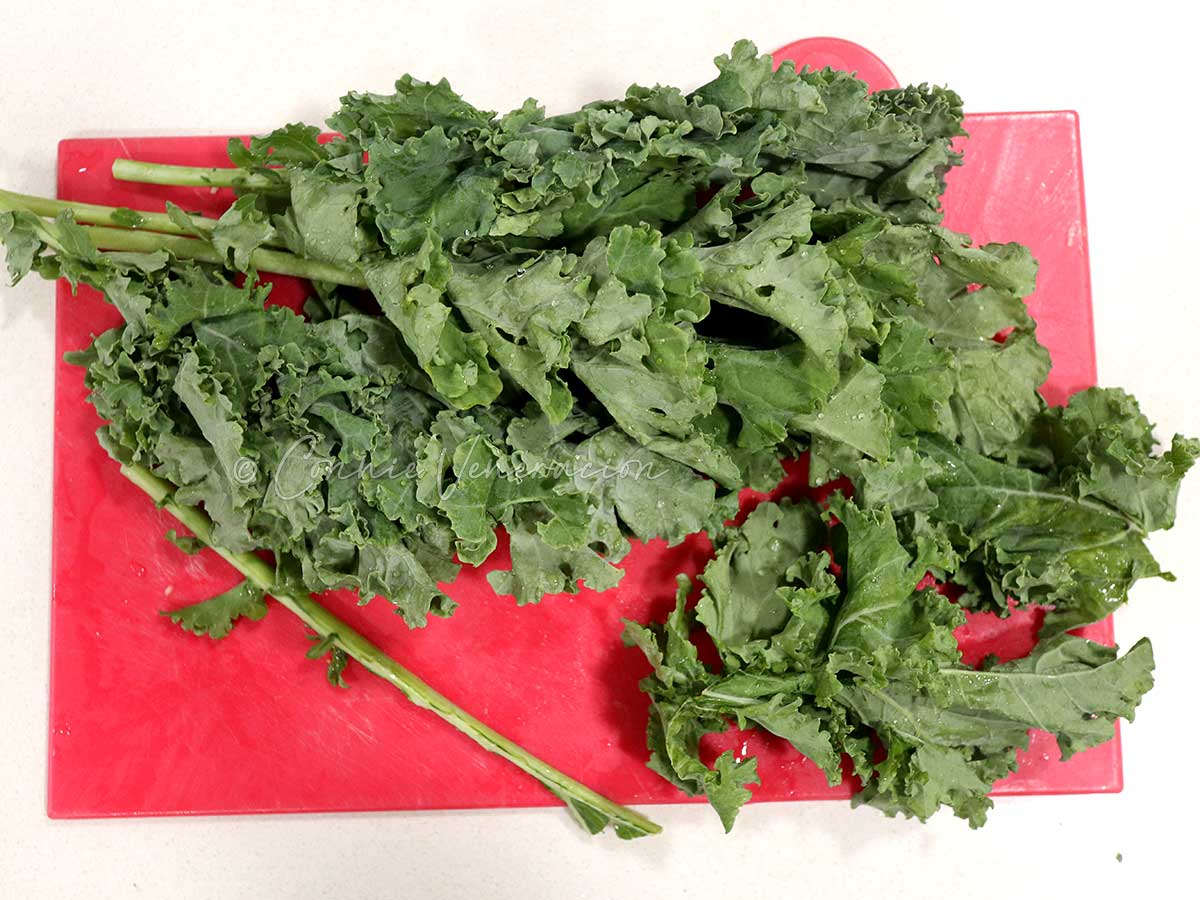
First, get rid of the fibrous ribs. You can use kitchen shears or a knife. Discard the ribs and cut up the leaves into whatever size you want.
Blanching
When adding to noodle soup, one way to cook the leaves is to blanch them sufficiently to soften them. Boil water in a pot, drop in the kale leaves pressing them down with a spatula so they don’t just float in the liquid. Once soaked, you can leave them in the boiling water. It just takes five minutes.
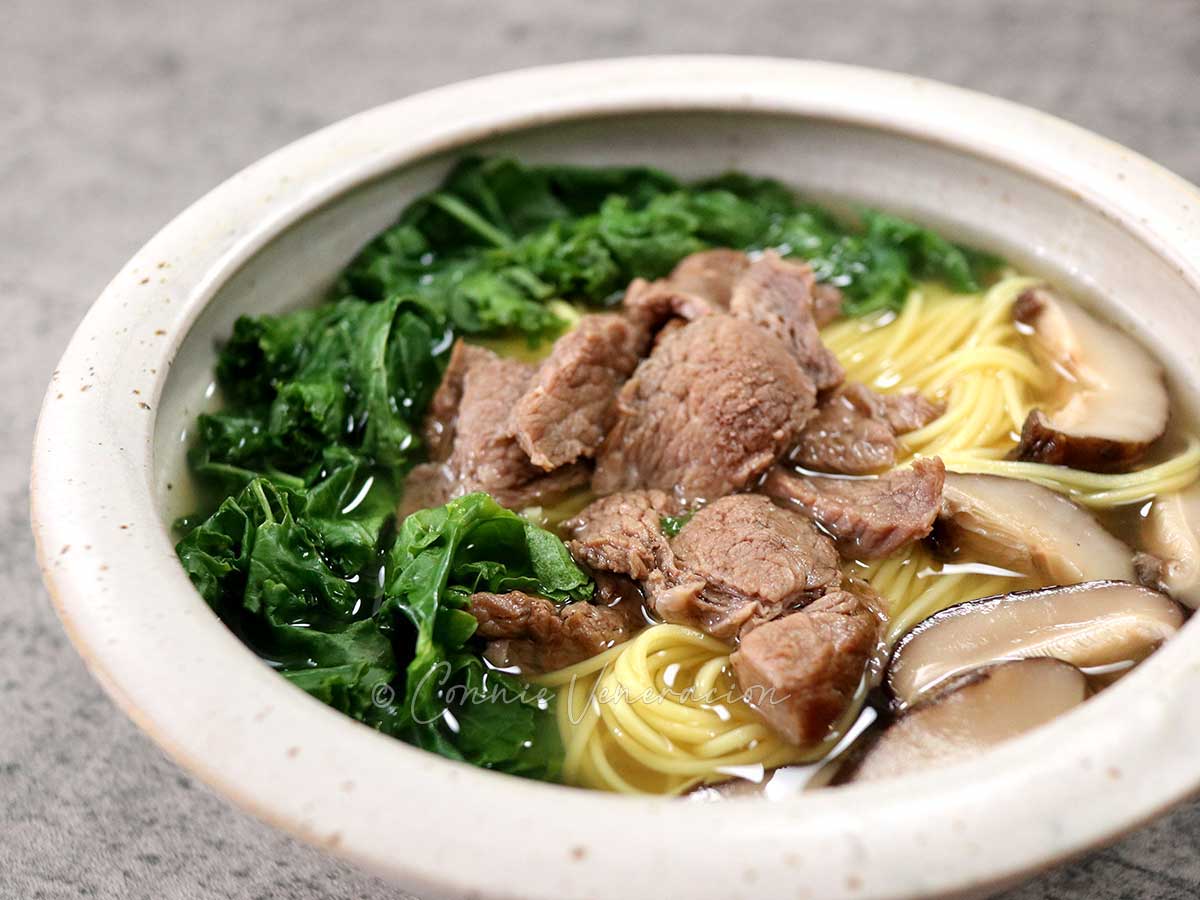
If you’re worried about overcooking them, scoop out the kale leaves from the hot water, dump in an ice bath to stop the cooking, then let them drain while you prepare the rest of the components of the noodle soup.
Cooking directly in broth
The thing about blanching is loss of nutrients. During the five minutes that the kale leaves cook in boiling water, some of the nutrients get transferred to the water which you’re going to throw away. So, there’s a second method of cooking the kale.
When you make noodle soup, you ladle boiling broth over the noodles, right? If the broth were any colder, the noodles and whatever else is in the bowl won’t get hot enough.
So, while the broth is boiling, drop in the trimmed kale leaves. Again, press them down to allow them to wilt and soften evenly. When sufficiently cooked, lift them out using kitchen tongs, arrange beside the noodles in the bowl, then ladle in the broth. No nutrients lost because they all went into the broth that goes into the bowl anyway.

